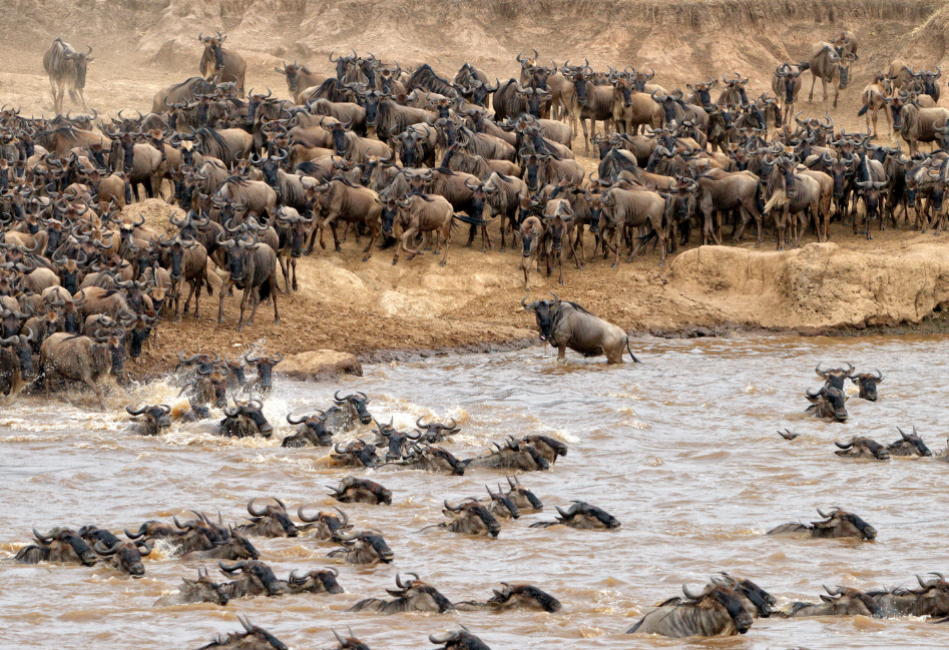"Everything you see exists together in a delicate balance. As king, you need to understand that balance and respect all the creatures, from the crawling ant to the leaping antelope." - Mufasa, The Lion King
This powerful quote from Mufasa in The Lion King captures the essence of what makes the Masai Mara National Reserve one of the most awe-inspiring places on Earth. Nestled in the southwest of Kenya, this iconic reserve is a living testament to the delicate balance of nature. From the majestic lions that roam its grasslands to the tiny insects that buzz beneath the tall grasses, every creature plays a vital role in this vibrant ecosystem.
A Jewel of the African Wilderness
The Masai Mara, named after the Maasai people and the Mara River, is a vast expanse of savanna that stretches over 1,500 square kilometers. Its rolling plains are dotted with acacia trees, riverine forests, and a variety of other habitats that support an incredible diversity of wildlife. The reserve is a natural extension of Tanzania’s Serengeti National Park, and together, these two regions form one of the most diverse and rich ecosystems on the planet.
The Masai Mara is perhaps best known for the Great Migration, often referred to as one of the "Seven New Wonders of the World." Each year, over two million wildebeest, zebras, and gazelles journey across the Serengeti and into the Mara, in search of greener pastures. This spectacle, driven by the rains and the need for sustenance, embodies the essence of Mufasa’s wisdom—nature's delicate balance is on full display as predators and prey move in a synchronized dance of survival.
The Big Five: Guardians of the Mara
At the heart of the Masai Mara's allure are the Big Five—lion, leopard, elephant, rhinoceros, and buffalo. These magnificent creatures symbolize the strength and beauty of the African wilderness and play critical roles in maintaining the ecosystem's balance.
-
Lions: Known as the "Kings of the Mara," lions are the apex predators of the reserve. Their presence is a keystone for the balance of the ecosystem. By preying on herbivores such as wildebeests and zebras, lions help regulate these populations, ensuring that overgrazing does not occur. This, in turn, allows vegetation to flourish, providing food and habitat for countless other species. Observing a pride of lions, with their intricate social structures and hunting strategies, is one of the highlights of any safari in the Mara.
-
Leopards: These elusive big cats are masters of stealth and adaptability. Leopards can often be found resting in the branches of trees, where they drag their prey to keep it away from scavengers. Their solitary nature and nocturnal habits make leopards a rare but thrilling sight. Like lions, they help control the populations of smaller mammals, maintaining the balance of life in the Mara.
-
Elephants: The gentle giants of the Mara, elephants are essential for the health of the savanna ecosystem. Their movements across the landscape create pathways that other animals use, and their feeding habits shape the vegetation. By uprooting trees and shrubs, elephants prevent bush encroachment and maintain the open grasslands that are crucial for other species. Elephants are also known to dig for water in dry riverbeds, creating waterholes that benefit a wide range of wildlife.
-
Rhinoceros: The black rhino, although critically endangered, still roams parts of the Masai Mara. Rhinos are browsers, feeding on bushes and small trees, which helps maintain the balance between different types of vegetation. Their presence in the Mara is a reminder of the ongoing need for conservation efforts to protect these iconic animals from the threats of poaching and habitat loss.
-
Buffalo: African buffalo are found in large herds throughout the Mara, often near water sources. These formidable animals are vital grazers, helping to manage the grasslands. Their grazing stimulates new plant growth, which benefits other herbivores. Buffalos are also a key food source for predators, maintaining the delicate predator-prey balance.
The Great Migration: Nature’s Grand Symphony
The Great Migration is the Masai Mara's most famous event, drawing thousands of tourists and nature enthusiasts each year. It is a living example of the interconnectedness of life in the wild. From July to October, the Mara becomes the stage for one of the greatest wildlife spectacles on Earth.
Millions of wildebeest, zebras, and gazelles move in search of fresh grass, driven by the rains and the instinct to survive. As they cross the Mara River, they face the peril of crocodiles lying in wait, ready to seize the opportunity for a meal. On the banks, lions and hyenas follow the herds, taking advantage of the abundance of prey.
This migration is a powerful demonstration of nature's balance, where every creature, from the smallest insect to the largest predator, has a role to play. The movement of these vast herds supports the entire ecosystem, as the grazing patterns help fertilize the soil, promoting plant growth, which in turn sustains a myriad of other life forms.
The Role of the Mara River: Lifeblood of the Ecosystem
The Mara River is the lifeblood of the reserve, providing water to countless species that call the Mara home. This river is not only a critical resource for wildlife but also a vital part of the Great Migration. As the herds cross its treacherous waters, they bring with them a pulse of life that ripples through the entire ecosystem.
The riverbanks are lined with lush vegetation, providing habitat and food for a variety of animals, from hippos and crocodiles to birds and monkeys. The health of the Mara River is directly linked to the health of the reserve. Conservation efforts to protect the river from pollution and overuse are essential to maintaining the delicate balance of this unique ecosystem.
The Maasai People: Guardians of the Mara
The Maasai people, after whom the reserve is named, have lived in harmony with the land for centuries. Their traditional way of life is closely intertwined with the natural world, and they have a deep understanding of the delicate balance that sustains the Mara.
The Maasai are semi-nomadic herders, and their cattle graze alongside the wild herbivores of the Mara. They have a profound respect for wildlife, which is reflected in their customs and practices. The Maasai's knowledge of the land and its inhabitants has been invaluable in conservation efforts, as they work alongside wildlife organizations to protect the Mara's biodiversity.
Conservation: Preserving the Delicate Balance
The Masai Mara faces numerous challenges, from poaching and habitat destruction to the impacts of climate change. The increasing human population around the reserve's borders has led to land-use conflicts and pressure on resources. However, conservation initiatives are actively working to address these issues and protect the delicate balance of the Mara.
Organizations and local communities are collaborating to implement sustainable tourism practices, anti-poaching efforts, and habitat restoration projects. By educating visitors about the importance of conservation and involving the Maasai people in these efforts, the goal is to ensure that the Mara's unique ecosystem continues to thrive for generations to come.
A Call to Respect and Protect
As Mufasa's words remind us, the beauty and richness of the Masai Mara depend on the delicate balance of its ecosystem. Every creature, from the crawling ant to the leaping antelope, plays a vital role in this intricate web of life. As visitors to this extraordinary landscape, we have a responsibility to respect and protect the natural world.
A safari in the Masai Mara is more than just an opportunity to see the Big Five or witness the Great Migration. It is a chance to connect with nature on a deeper level, to appreciate the interconnectedness of all living things, and to understand the importance of preserving the delicate balance that sustains life in the wild.
Conclusion
The Masai Mara National Reserve is a living testament to the wisdom of Mufasa's words. It is a place where the balance of nature is evident in every rustling leaf, every animal track, and every breathtaking sunset over the savanna. By respecting and protecting this delicate balance, we honor the legacy of the Mara and ensure that its wonders continue to inspire and amaze for generations to come..



